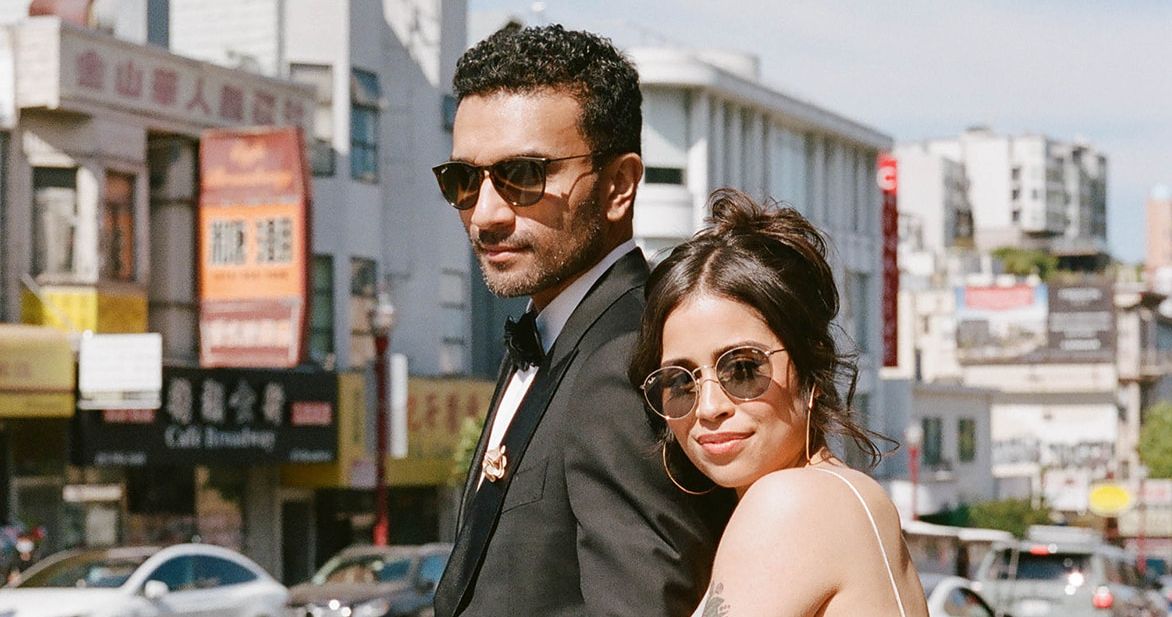Education
White House Counsel Stepping Down as Biden Team Prepares for Election Run

Stuart Delery, the White House counsel who has helped usher in some of President Biden’s most important policies while defending him against Republican attacks, announced on Thursday that he plans to step down as the West Wing shapes its staff for the final 15-month sprint to next year’s election.
Mr. Delery had indicated to colleagues a few months ago that he would be ready to leave by fall after nearly three years in the White House and the pre-inaugural transition that have been all consuming. Since Republicans took over the House in January, the counsel’s office has been the command post for the White House’s response to a multitude of congressional investigations.
No successor was named on Thursday, but a new counsel was expected to be in place by the time Mr. Delery formally leaves next month. Jeffrey D. Zients, the White House chief of staff who took over the president’s team six months ago, has asked cabinet secretaries to decide in the coming weeks whether they plan to depart or will commit to staying through the November 2024 election to avoid distracting confirmations heading into the campaign season.
Mr. Biden’s White House team has been steadier than most, especially compared with the one under his predecessor, former President Donald J. Trump, who burned through aides at a frenetic pace. Although a number of top officials have left Mr. Biden’s administration, the total turnover of 56 percent remains below the modern average, and his cabinet is the most stable going back at least seven administrations, according to figures compiled by the Brookings Institution.
Susan E. Rice, the president’s domestic policy adviser, left in May and was replaced by Neera Tanden, the staff secretary, who in turn was replaced by Stefanie Feldman, a longtime Biden aide. Julie Chávez Rodríguez stepped down as director of intergovernmental affairs to take over as campaign manager and was succeeded by Tom Perez, a former labor secretary. Louisa Terrell, the director of legislative affairs who helped coordinate debt ceiling negotiations, announced her departure last month and was replaced by Shuwanza Goff, the president’s liaison to the House.
But the president’s core inner circle of Mr. Zients and advisers like Steven J. Ricchetti, Anita Dunn, Jennifer O’Malley Dillon and Bruce Reed is expected to remain intact through the election, as is his top national security team led by Jake Sullivan and his deputy, Jon Finer.
Some colleagues have speculated about whether Michael Donilon, one of Mr. Biden’s closest advisers and the author of many of his major speeches, will move over to the campaign or stay inside the White House.
Mr. Delery, 54, served as acting associate attorney general, the No. 3 official at the Justice Department, under President Barack Obama and joined the Biden team as deputy White House counsel before taking over the top legal job in the White House a little over a year ago. He is the first openly gay man to serve as counsel to the president.
“Stuart Delery has been a trusted adviser and a constant source of innovative legal thinking since Day 1 of my administration,” Mr. Biden said in a statement.
Mr. Delery, a low-key and studious Yale Law School graduate, was among the legal architects of some of Mr. Biden’s most important initiatives, including strategies to distribute Covid-19 vaccines, to forgive hundreds of billions of dollars of student debt and to revamp immigration after the expiration of Title 42, a pandemic-era measure.
When the Supreme Court overruled the president’s original student loan plan, his team quickly developed new ways to try to accomplish the same goals. When Republicans threatened to not raise the debt ceiling, Mr. Delery developed options for Mr. Biden to do so on his own authority, although it proved unnecessary when a bipartisan deal was struck.
Mr. Delery also oversaw a drive to install as many judges as possible. During his tenure, 20 nominees were confirmed to federal appeals courts and 51 to federal district courts. The slate of new judges has been the most diverse in history.
“Stuart Delery was a historic counsel for an administration getting historic things done,” Mr. Zients said in a statement. “His work in support of President Biden and Vice President Harris will shape the country for the better for decades to come.”

Education
Video: Protesters Scuffle With Police During Pomona College Commencement

new video loaded: Protesters Scuffle With Police During Pomona College Commencement
transcript
transcript
Protesters Scuffle With Police During Pomona College Commencement
Pro-Palestinian demonstrators tried to block access to Pomona College’s graduation ceremony on Sunday.
-
[chanting in call and response] Not another nickel, not another dime. No more money for Israel’s crime. Resistance is justified when people are occupied.
Recent episodes in U.S.
Education
Video: Police Use Pepper Spray on Protesters on G.W.U.’s Campus

new video loaded: Police Use Pepper Spray on Protesters on G.W.U.’s Campus
transcript
transcript
Police Use Pepper Spray on Protesters on G.W.U.’s Campus
Police officers arrested 33 pro-Palestinian protesters and cleared a tent encampment on the campus of George Washingon University.
-
“The Metropolitan Police Department. If you are currently on George Washington University property, you are in violation of D.C. Code 22-3302, unlawful entry on property.” “Back up, dude, back up. You’re going to get locked up tonight — back up.” “Free, free Palestine.” “What the [expletive] are you doing?” [expletives] “I can’t stop — [expletives].”
Recent episodes in Israel-Hamas War
Education
How Counterprotesters at U.C.L.A. Provoked Violence, Unchecked for Hours

A satellite image of the UCLA campus.
On Tuesday night, violence erupted at an encampment that pro-Palestinian protesters had set up on April 25.
The image is annotated to show the extent of the pro-Palestinian encampment, which takes up the width of the plaza between Powell Library and Royce Hall.
The clashes began after counterprotesters tried to dismantle the encampment’s barricade. Pro-Palestinian protesters rushed to rebuild it, and violence ensued.
Arrows denote pro-Israeli counterprotesters moving towards the barricade at the edge of the encampment. Arrows show pro-Palestinian counterprotesters moving up against the same barricade.
Police arrived hours later, but they did not intervene immediately.
An arrow denotes police arriving from the same direction as the counterprotesters and moving towards the barricade.
A New York Times examination of more than 100 videos from clashes at the University of California, Los Angeles, found that violence ebbed and flowed for nearly five hours, mostly with little or no police intervention. The violence had been instigated by dozens of people who are seen in videos counterprotesting the encampment.
The videos showed counterprotesters attacking students in the pro-Palestinian encampment for several hours, including beating them with sticks, using chemical sprays and launching fireworks as weapons. As of Friday, no arrests had been made in connection with the attack.
To build a timeline of the events that night, The Times analyzed two livestreams, along with social media videos captured by journalists and witnesses.
The melee began when a group of counterprotesters started tearing away metal barriers that had been in place to cordon off pro-Palestinian protesters. Hours earlier, U.C.L.A. officials had declared the encampment illegal.
Security personnel hired by the university are seen in yellow vests standing to the side throughout the incident. A university spokesperson declined to comment on the security staff’s response.
Mel Buer/The Real News Network
It is not clear how the counterprotest was organized or what allegiances people committing the violence had. The videos show many of the counterprotesters were wearing pro-Israel slogans on their clothing. Some counterprotesters blared music, including Israel’s national anthem, a Hebrew children’s song and “Harbu Darbu,” an Israeli song about the Israel Defense Forces’ campaign in Gaza.
As counterprotesters tossed away metal barricades, one of them was seen trying to strike a person near the encampment, and another threw a piece of wood into it — some of the first signs of violence.
Attacks on the encampment continued for nearly three hours before police arrived.
Counterprotesters shot fireworks toward the encampment at least six times, according to videos analyzed by The Times. One of them went off inside, causing protesters to scream. Another exploded at the edge of the encampment. One was thrown in the direction of a group of protesters who were carrying an injured person out of the encampment.
Mel Buer/The Real News Network
Some counterprotesters sprayed chemicals both into the encampment and directly at people’s faces.
Sean Beckner-Carmitchel via Reuters
At times, counterprotesters swarmed individuals — sometimes a group descended on a single person. They could be seen punching, kicking and attacking people with makeshift weapons, including sticks, traffic cones and wooden boards.
StringersHub via Associated Press, Sergio Olmos/Calmatters
In one video, protesters sheltering inside the encampment can be heard yelling, “Do not engage! Hold the line!”
In some instances, protesters in the encampment are seen fighting back, using chemical spray on counterprotesters trying to tear down barricades or swiping at them with sticks.
Except for a brief attempt to capture a loudspeaker used by counterprotesters, and water bottles being tossed out of the encampment, none of the videos analyzed by The Times show any clear instance of encampment protesters initiating confrontations with counterprotesters beyond defending the barricades.
Shortly before 1 a.m. — more than two hours after the violence erupted — a spokesperson with the mayor’s office posted a statement that said U.C.L.A officials had called the Los Angeles Police Department for help and they were responding “immediately.”
Officers from a separate law enforcement agency — the California Highway Patrol — began assembling nearby, at about 1:45 a.m. Riot police with the L.A.P.D. joined them a few minutes later. Counterprotesters applauded their arrival, chanting “U.S.A., U.S.A., U.S.A.!”
Just four minutes after the officers arrived, counterprotesters attacked a man standing dozens of feet from the officers.
Twenty minutes after police arrive, a video shows a counterprotester spraying a chemical toward the encampment during a scuffle over a metal barricade. Another counterprotester can be seen punching someone in the head near the encampment after swinging a plank at barricades.
Fifteen minutes later, while those in the encampment chanted “Free, free Palestine,” counterprotesters organized a rush toward the barricades. During the rush, a counterprotester pulls away a metal barricade from a woman, yelling “You stand no chance, old lady.”
Throughout the intermittent violence, officers were captured on video standing about 300 feet away from the area for roughly an hour, without stepping in.
It was not until 2:42 a.m. that officers began to move toward the encampment, after which counterprotesters dispersed and the night’s violence between the two camps mostly subsided.
The L.A.P.D. and the California Highway Patrol did not answer questions from The Times about their responses on Tuesday night, deferring to U.C.L.A.
While declining to answer specific questions, a university spokesperson provided a statement to The Times from Mary Osako, U.C.L.A.’s vice chancellor of strategic communications: “We are carefully examining our security processes from that night and are grateful to U.C. President Michael Drake for also calling for an investigation. We are grateful that the fire department and medical personnel were on the scene that night.”
L.A.P.D. officers were seen putting on protective gear and walking toward the barricade around 2:50 a.m. They stood in between the encampment and the counterprotest group, and the counterprotesters began dispersing.
While police continued to stand outside the encampment, a video filmed at 3:32 a.m. shows a man who was walking away from the scene being attacked by a counterprotester, then dragged and pummeled by others. An editor at the U.C.L.A. student newspaper, the Daily Bruin, told The Times the man was a journalist at the paper, and that they were walking with other student journalists who had been covering the violence. The editor said she had also been punched and sprayed in the eyes with a chemical.
On Wednesday, U.C.L.A.’s chancellor, Gene Block, issued a statement calling the actions by “instigators” who attacked the encampment unacceptable. A spokesperson for California Gov. Gavin Newsom criticized campus law enforcement’s delayed response and said it demands answers.
Los Angeles Jewish and Muslim organizations also condemned the attacks. Hussam Ayloush, the director of the Greater Los Angeles Area office of the Council on American-Islamic Relations, called on the California attorney general to investigate the lack of police response. The Jewish Federation Los Angeles blamed U.C.L.A. officials for creating an unsafe environment over months and said the officials had “been systemically slow to respond when law enforcement is desperately needed.”
Fifteen people were reportedly injured in the attack, according to a letter sent by the president of the University of California system to the board of regents.
The night after the attack began, law enforcement warned pro-Palestinian demonstrators to leave the encampment or be arrested. By early Thursday morning, police had dismantled the encampment and arrested more than 200 people from the encampment.
-

 Politics1 week ago
Politics1 week ago'You need to stop': Gov. Noem lashes out during heated interview over book anecdote about killing dog
-

 Politics1 week ago
Politics1 week agoRFK Jr said a worm ate part of his brain and died in his head
-

 World1 week ago
World1 week agoPentagon chief confirms US pause on weapons shipment to Israel
-

 Politics1 week ago
Politics1 week agoHere's what GOP rebels want from Johnson amid threats to oust him from speakership
-

 World1 week ago
World1 week agoPro-Palestine protests: How some universities reached deals with students
-

 World1 week ago
World1 week agoConvicted MEP's expense claims must be published: EU court
-

 Politics1 week ago
Politics1 week agoCalifornia Gov Gavin Newsom roasted over video promoting state's ‘record’ tourism: ‘Smoke and mirrors’
-

 Politics1 week ago
Politics1 week agoOhio AG defends letter warning 'woke' masked anti-Israel protesters they face prison time: 'We have a society'














